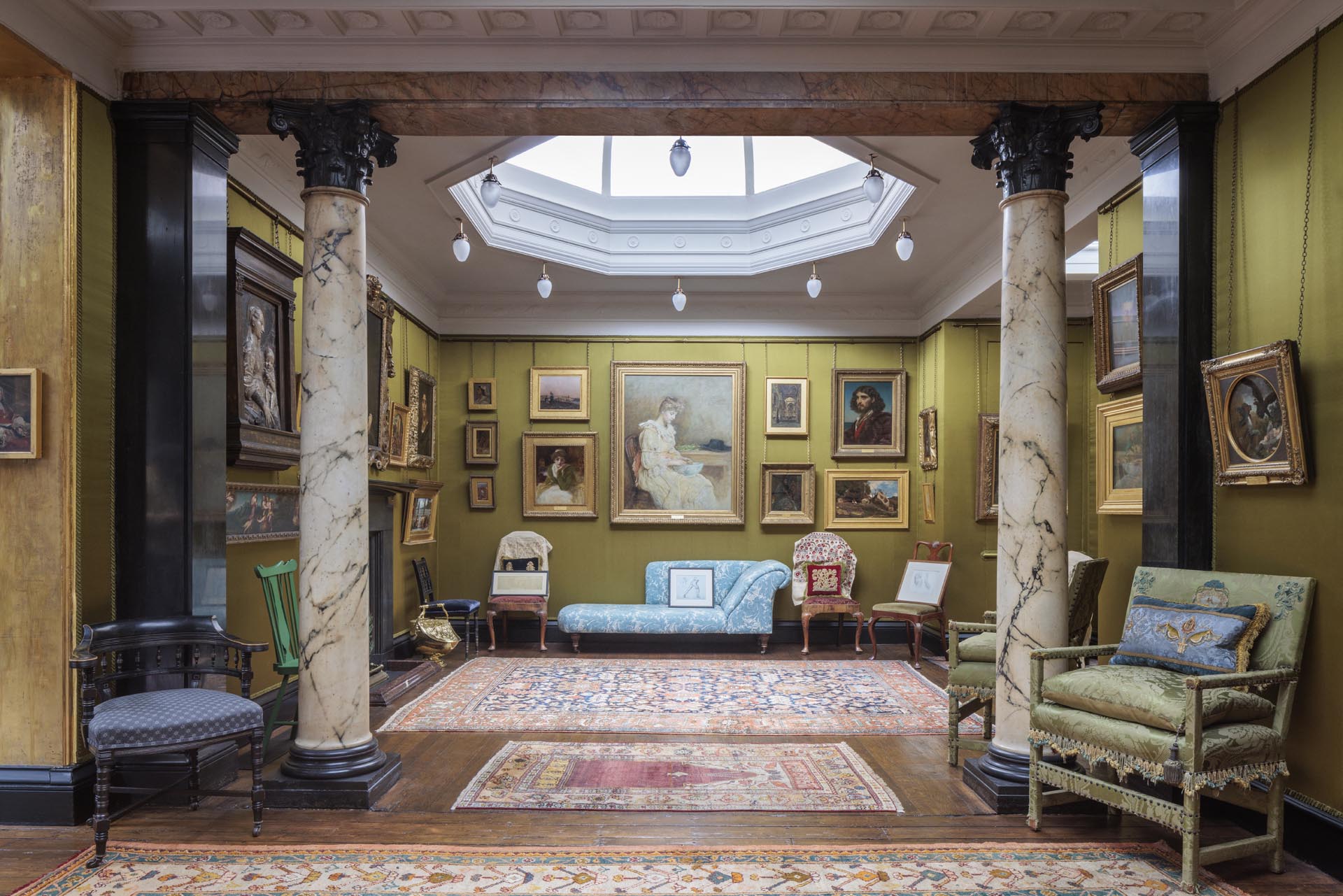You might not notice anything unusual walking past the formal red brick exterior of a Grade II listed building at 12 Holland Park Road. What makes this place special is to be found not on the outside, but the inside, namely, extraordinary jaw-dropping interiors.
Prepare yourself to dive into a private palace of art consisting of gold mosaic friezes, opulent oriental-inspired ceilings, the peacock-blue tiles, wooden lattices and a fabulous collection of paintings, ceramics, textiles, and carpets.
It is unique among the capital’s museums in combining an exceptional collection of Victorian art with the intimacy of a private home.
Lord Frederic Leighton
Leighton House is the former home of one of the most influential and virtuosic British artists of the nineteenth century Lord Frederic Leighton and the only purpose-built studio-house open to the public in the UK.
Leighton served as President of the Royal Academy for 18 years and was on the advisory boards of the British Museum, the National Portrait Gallery and the Sir John Soane’s Museum.
Lord Leighton received many national and international awards and honours, hence, he was well acquainted with members of the royal family and with most of the great artists, writers and politicians of the day. For example, one of his paintings was bought by Queen Victoria.
The Leighton House Museum is the original home of the artist and remains as one of the most astonishing buildings of the nineteenth-century
Although Leighton was best known for his artworks and sculptures, he was also deeply invested in architecture and pioneered the idea of the house as a total work of art. His home was designed to entertain and impress the foremost artists, collectors and celebrities. Queen Victoria once visited the house in 1859.
In order to meet Leighton’s growing ambitions and vivid artistic taste the house built on an empty plot of land has undergone several renovations over the course of thirty years.
The sensational Arab Hall
Undoubtedly, Leighton House’s centre piece is the breathtaking two-storey Arab Hall with golden dome and indoor fountain. More expensive to build than the entirety of the original house, it caused a sensation upon completion in 1882.
This is homage to Leighton’s fascination with the Middle East, the region which he often visited on his travels and a showcase of his huge collection of ceramic tiles.
The beautiful peacock blue tiles
Lord Leighton collected and purchased many of 16th and 17th century Islamic tiles himself on his trips to Turkey, Egypt and Syria, as well as asking friends and colleagues to acquire further tiles for him. For example, Caspar Purdon Clarke, who went on to became director of the V&A museum in London, purchased the two matching panels featuring grape motifs on the West wall, in Damascus in 1877.
In the more restrained but no less luxurious silk room are many artworks by Leighton and a number of his pre-Raphaelite contemporaries like Millais & Burne-Jones.
The upper floor is dominated by what must be one of the most perfect painter’s studios ever built, combining beauty and functionality in equal measure. The spectacular space is lit by a huge north-facing glass bay in which was placed the model’s throne.
At the east end is a minstrels’ gallery, built so that Leighton could paint from his tallest canvases, although it is also a major decorative feature, now restored with fine reconstructions of the two massive bookcases, designed by Leighton, that were originally at its base. Essentially simple and geometric in structure, black japanned and set with precious lapis lazuli roundels, they possess an austere richness.
The sideboard that is a major feature of the dining room is another restored example of Leighton’s artistic furniture, which stands beside the innovatory work of pioneers of modern design such as Christopher Dresser and E.W. Godwin, who were Leighton’s contemporaries.
Ascetic personal space
Contrasting to the other grand open rooms Lord Leighton himself lived very simply in a tiny single bedroom. There is no proper kitchen as usually he dined at his club and had caterers in for parties. His private life was closely guarded – he lived alone with just a man-servant, travelled alone and left no diaries.
Even his letters make little reference to his personal circumstances. Just before his death in 1896, Leighton was ennobled, becoming Baron Leighton of Stretton. He is the only British artist to have been awarded this honour and is buried in St. Paul’s Cathedral.
An £8 million transformation
After his death in 1896 the contents were sold but the house survived to become a museum in 1929. Its increasing popularity in recent decades has finally led to an £8m restoration and expansion: a designed from scratch entrance looking towards the garden and a 180-square metre basement serving as an additional gallery and a learning centre, as well as the essential café and shop.
Holland Park Circle and ‘Paradise Row’
Frederic Leighton was at the heart of what became known as the Holland Park Circle of artists. Following his example in Holland Park Road, many of the plots along it were bought by up-and-coming artists who then commissioned leading architects to design houses that combined studio space with domestic quarters for them and their families.
Built on a grand scale and to the artists’ exacting requirements, these houses were investments, designed to further the reputation and standing of their occupants.
Ultimately the painters and sculptors living in ‘Paradise Row’ became the backbone of the artistic establishment enjoying great wealth and fame. All bar one were made full Royal Academicians, with numerous public honours and titles bestowed upon them.
We recommend combining your visit to Leighton House with another historic location – the house of Edward Linley Sambourne a cartoonist for the satirical magazine Punch and book illustrator.
Plan your visit to Leighton House and Sambourne House here.















